On March 15, 2011, in Dara'a, a city in south-east Syria, a bloody war began with tragic humanitarian consequences.
It is in this city that several demonstrators rise up with a series of civil protests against the Syrian regime, ruled in a dictatorial manner by Syrian President Bashar al-Assad.
The protests arise from a situation of strong crisis in the country and are placed in the wake of the demonstrations and riots that broke out between the end of 2010 and the beginning of 2011 in many other countries such as Egypt, Libya, Tunisia, Algeria, Yemen.
The demonstrations are known as the "Arab Spring" (al-Rabīʿ al-ʿArabī) and are unprecedented.
The slogan al-sh'ab yurid iskat al-nizam ("the people want the fall of the system") is the common thread that links the square of Dara'a to the other Arab squares of 2011.
The episode that triggers the fierce protests in Syria is the arrest and torture of some children, who had written on a wall "it's your turn, doctor".
The doctor is Bashar al-Assad, who returned from London shortly before his father's death to succeed him as president.
The al-Assad family has been in government in Damascus since 1971 and belongs to the Alawite minority of Shiism. Initially, the demonstrations involved the Sunni Muslim community in particular.
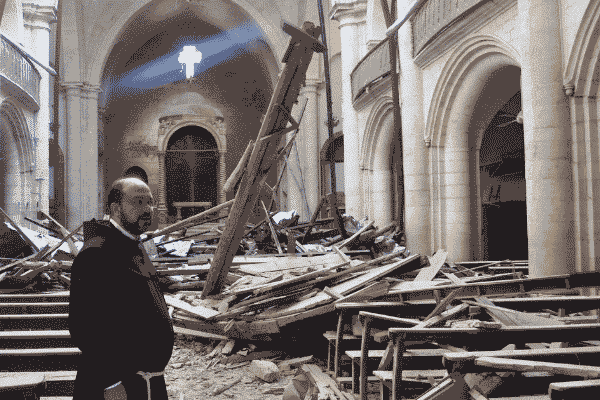
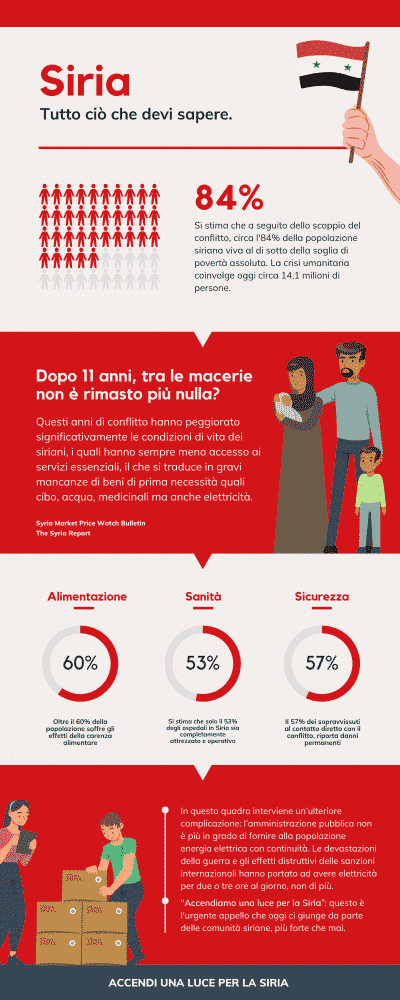
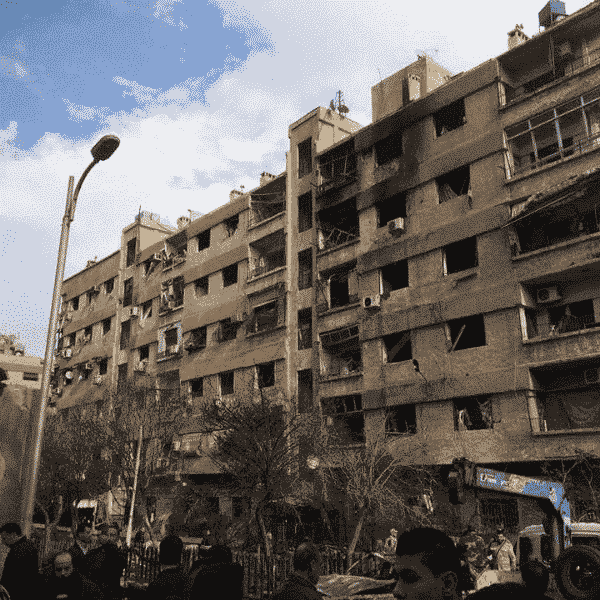
Syria today
The current Syrian context is substantially stalled from the point of view of armed struggle, but conditions for the civilian population remain decidedly serious and unstable.
The conflict has caused some 387,000 deaths, countless injuries, mass displacement and thousands of destructions to civilian infrastructure. Some 12 million people have been forced to flee their homes. Civil infrastructure and public services damaged or destroyed include water supply, health system, schools. The living conditions of the displaced are tragic: there is a lack of drinking water, food, health and psychological assistance and a decent minimum.
The north-west of the country is still controlled by armed opposition groups, such as the Islamist Hayat Tahrir al-Sham (HTS), involved and active in the region.
About 90% of the Syrian population lives below the poverty line, often in misery. The minimum wage in Syria is $27 per month, which means that almost the entire working population earns an income that is not enough to buy basic necessities.
The severe economic crisis is due to various factors, including the implementation of new US sanctions through the Caesar Syria Civilian Protection Act, regional financial crises and the Covid-19 pandemic.
Everyday risks
The collapse of the economy, sanctions and internal displacement have led to an urgent need for humanitarian aid for at least 14 million people. To respond to the serious economic crisis, many Syrian families are forced to resort to harmful practices, especially for girls and young women. These practices often consist of early and forced marriages and other forms of gender-based violence.
Around 11 million people also live in hazardous areas. In 2020 and 2021, 23% of unexploded ordnance victims were children, of whom 42% were killed or injured while playing.
It is increasingly difficult to access essential services, which is combined with the very serious problem that the population has been facing, especially since last year: the lack of electricity and heating. To respond to this emergency, pro Terra Sancta has undertaken a project to install solar panel systems capable of guaranteeing a constant and free supply of electricity and hot water.
Economic stagnation and the deterioration of public services could lead to a social revolt and the entrenchment of many young people, undermining the already precarious political stability.
Gasoline , essential for not staying in the dark, has become a luxury.
Before 2011, Syria was self-sufficient in food production, but in recent years, more than half of the food supply must be imported. In 2021, in fact, two-thirds of food was imported.
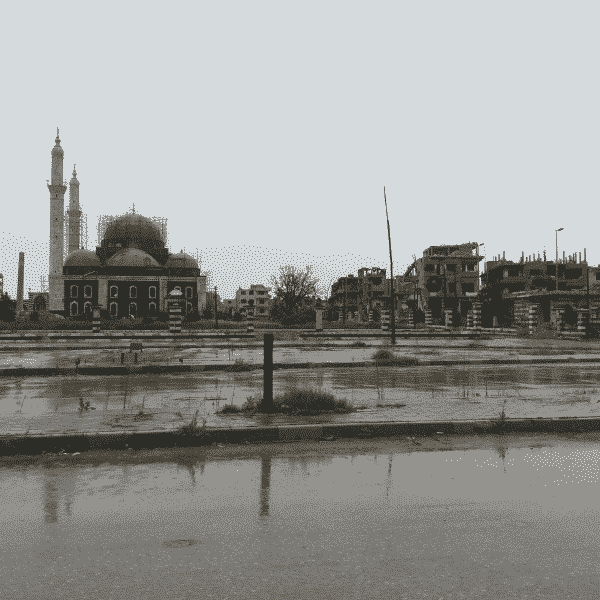
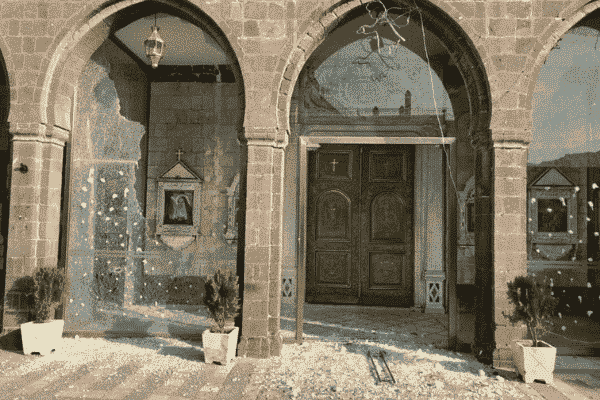
How did all this come about? Brief timeline of the Syrian Civil War
Eleven years of crisis have severely destroyed the health system in Syria, leaving millions of people living below the emergency threshold of health care. The lack of clean water in homes and civilian infrastructure is alarming.
It is therefore clear that, after eleven years of war, the situation in Syria is truly tragic.
The Syrian uprising, which began on March 15, 2011 with the first public demonstrations, developed on a national scale, and then became civil war in 2012. There are many military factions that entered the conflict, supporting different and personal interests. However, the protagonists of the conflict are mainly two: the Syrian Regular Army and the rebels. The latter are financed and armed by many countries in the Middle East and beyond, in an attempt to marginalize the excessive power of President Bashar al-Assad. Let us return to the salient points of the conflict.
2011: First year of war in Syria
In the first months, the anti-government protests are peaceful, but they are bloodily repressed. Six months after their inception, it was born from a group of deserting officers: the Free Syrian Army (FSA), which represents the first anti-government military formation.
The continuous and violent repression of demonstrations by government forces soon leads to a fierce civil war.
In particular, Turkey and the Gulf countries lend support to the various fighting groups, under the protection of the United States.
The number of victims is soaring and the wave of protests is also spreading to other cities in Syria. Part of the demonstrators embrace armed struggle. Several Syrian soldiers desert to join the ranks of the demonstrations.
The numbers of civilian and refugee victims in neighbouring countries are in the thousands.
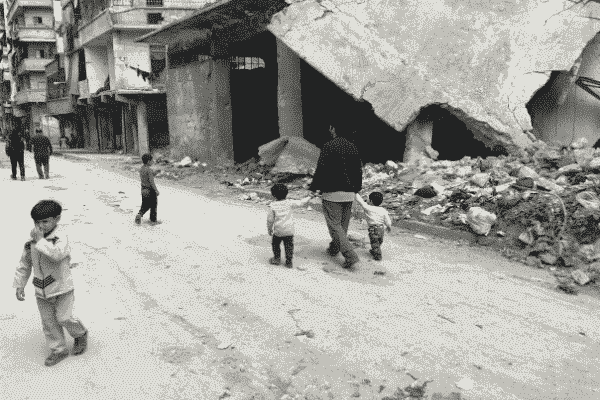
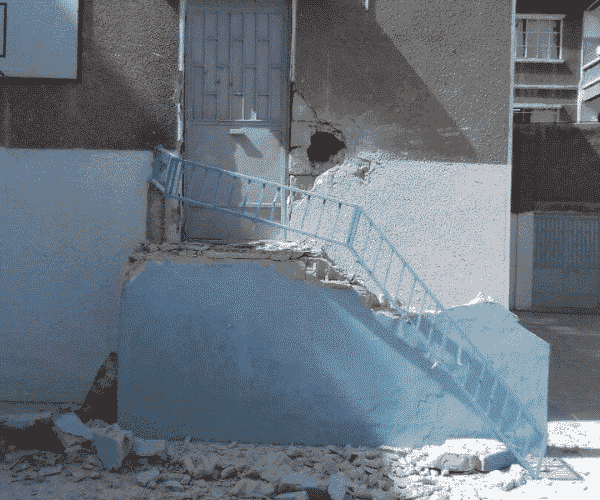
2012: The rise of Jabhat al-Nusra
Groups that call themselves jihadists take over and count foreign fighters among their ranks : foreign fighters , who came to Syria to suppress the al-Assad regime.
The Free Syrian Army is joined by a Syrian branch of al-Qaeda and the Islamic State in Iraq: Jabhat al-Nusra, the al-Nusra Front (the term "al-Nusra" comes from the word " al-nasra", which in Arabic means victory). The members of Jabhat al-Nusra are Sunni fundamentalists, and they too are fighting to overthrow the regime of Bashar al-Assad.
The Front is the first Salafist and jihadist group to carry out suicide bombings in Syria. It initially enjoyed strong support in Iraq and also planned to create an Islamic State in Syria.
The Front has more and more followers, who often resort to car bomb attacks and suicide bombings, causing hundreds of victims.
Clashes between the rebels and the regular Syrian army are increasing; The regime is guilty of unspeakable massacres on the population. The US, France, Britain and Turkey support the rebels. Russia, China, Iran and Venezuela are supporting the al-Assad regime.
2013: The conquest of Raqqa
The conflict is ongoing throughout the country and extremist groups are getting stronger. The important strategic region of Raqqa is conquered by Jabhat al-Nusra and the Free Syrian Army. Another extremist force is added to the Front: Daesh , Arabic acronym for al-dawla al-islamiyya fi al-Iraq wa al-Sham, or "the Islamic State of Iraq and the Levant (ISIS).
The rebel front is therefore divided into various groups; the common enemy is the regular Syrian army of Bashar al-Assad.
On August 21, the government was accused of having used chemical weapons against the population: this according to the reconstructions of some UN officials who, after five days, carried out surveys in hospitals and on the places where the attacks allegedly took place. The US and Britain openly support the Free Syrian Army, but the great influence of jihadist terrorists in northern Syria forces them to suspend all support for Syrian rebels in those areas. Shortly after the occupation of Raqqa, the Salafists of Jabhat al-Nusra got rid of the FSA, considered too moderate.
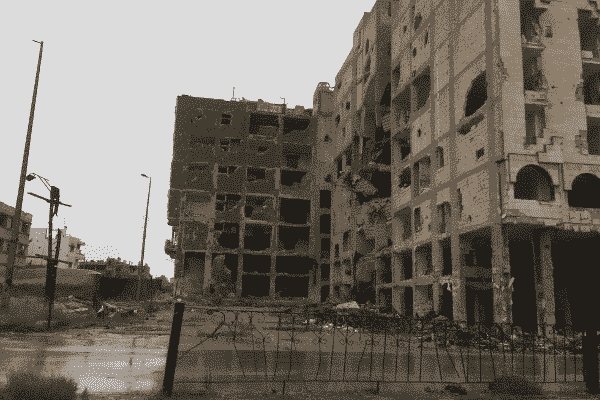
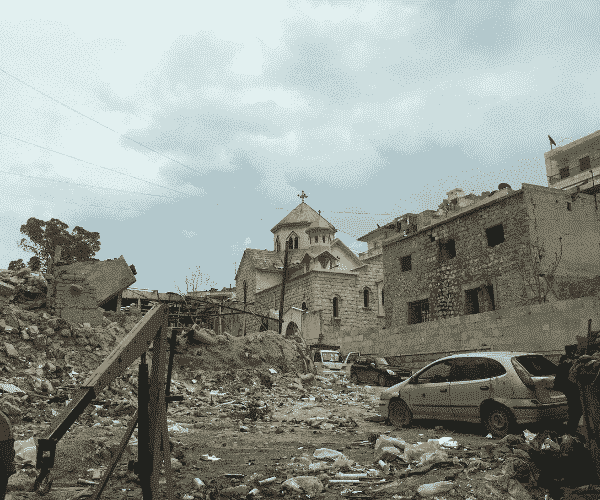
2014: the birth of the Islamic Caliphate
The Free Syrian Army definitively breaks away from the extremist al-Nusra Front and ISIS. Opposed to ISIS are Kurdish forces operating in northeast Syria. In general, divisions among the rebels are increasing. The UN organizes a peace conference in Geneva on the Syrian crisis, which ends in nothing.
ISIS conquers many cities in Iraq. In June, presidential elections are held which, according to the new Syrian Constitution, allow the presence of more candidates. Polling stations are installed only in government-controlled areas, cutting off Syrian rebels, the Islamic State and the Kurds. Al-Assad is re-elected president for the third time with 88.7% of the vote.
On June 29, Abu Bakr al-Baghdadi, leader of the Islamic State, proclaimed the birth of the Islamic Caliphate. The self-styled Islamic State conquers strategic territories between Syria and northern Iraq, including the very important cities of Mosul and Kobane. In a short time they expel the militants of the al-Nusra Front from the city of Raqqa, beheading among civilians all those who oppose the Caliphate.
Kobane is a region bordering Turkey and was controlled by Kurdish militias. There are 300,000 refugees to Turkey and Erdoğan deploys his troops on the border.
In 2014, ISIS controls numerous archaeological sites, water and oil plants, from which it derives much of its economic livelihood. Further "income" comes from looting, violence and kidnappings near occupied villages. ISIS aims to eliminate the al-Nusra Front. In September, a US-led coalition bombed ISIS-held territories in Syria that were strategic targets of the self-proclaimed Islamic State.
2015: Russia takes the field
In September, Russia enters the Syrian conflict, playing a "game changer" role in favor of the Syrian regime.
Russian President Vladimir Putin welcomes Bashar al-Assad to Moscow. The Kurds, the FSA and the US-led coalition manage to recapture many territories, getting closer and closer to Raqqa, the capital of the Caliphate. Coalition planes bomb the Islamic State.
Thanks to Russian support, the Syrian government army partially recaptures the city of Aleppo.
Paris lives the nightmare of the terrorist attacks of November 13 at the Bataclan theater, at the Stade de France and in some clubs in the X and XI arrondissements.
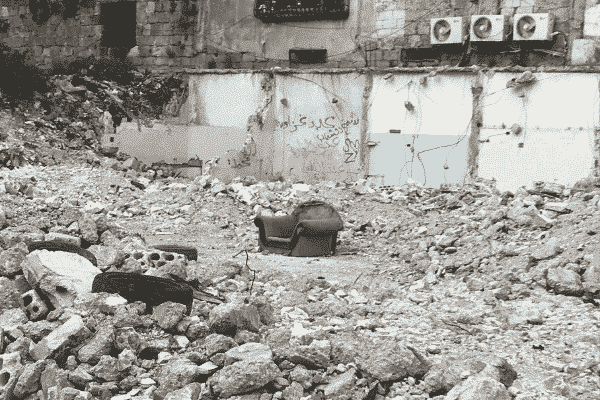
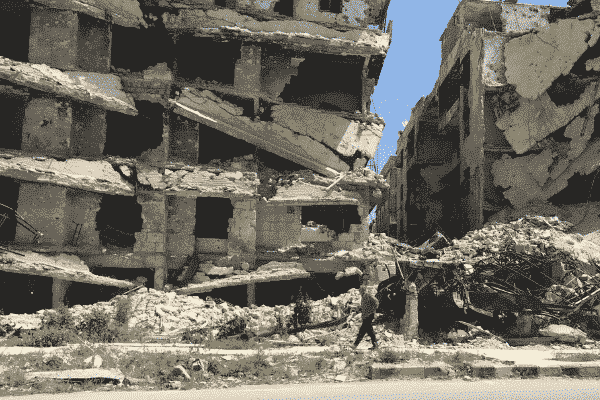
2016: the drama of the Aleppo population
After a brief truce, violent clashes resume for control of the country's strategic cities. In January, Kurdish militias announced that Kobani had been recaptured. The clashes between the regime and the rebels have been concentrated in particular in Aleppo, a city in the north-west of the country and the economic capital of Syria.
Aleppo is divided in two: the eastern part is under the control of rebel forces and the western part is controlled by the regime. East Aleppo is still inhabited by thousands of civilians and is under siege. It is increasingly difficult to create humanitarian corridors and provide access to livelihoods for the civilian population. The government army and the Russian army launch heavy bombardment on the city. In mid-December, eastern Aleppo is captured by Assad's army.
On December 15, the jihadist militiamen controlled very small territories and a truce was announced. Russia and Turkey allow the last jihadist cells to leave Aleppo and reach Idlib. On Christmas Eve, Aleppo is no longer an Islamist stronghold.
2017: The constant defeats of ISIS
Since January, several victories of the Syrian army have followed.
On April 4, a new chemical attack causes 72 deaths in Khan Sheikhoun, Idlib province.
Western forces are increasing their intervention in the region and the number of victims has risen to more than 300,000 since the beginning of the Syrian civil war.
It is announced by the Syrian Democratic Forces, which are an alliance of Kurdish, Arab and Assyrian-Syriac militias, that Raqqa is free from ISIL forces.
In the east, Assad's forces continue to pressure ISIL. Government forces are constantly gaining ground.
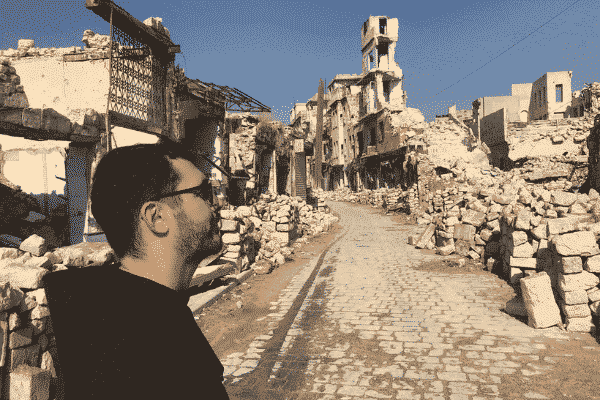
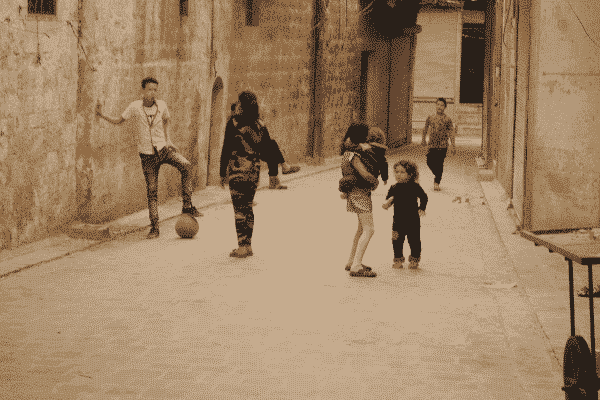
2018: the last territory of the Islamic State
Israel strikes the Iranian armed forces in Syria. In June, Syrian government forces began a campaign to retake all rebel-held territory, after consolidating areas around Damascus, Syria's capital, and Homs. Idlib is the last region left under rebel control and preparations are underway for confrontation.
2019: the population in misery
At the end of the year, violence increased enormously; They will end in February 2020 with a ceasefire. Estimates indicate that this year 83% of the population lives below the poverty line and unemployment is rampant throughout the country. The stability of the government seems to be at risk also as a result of the misery in which those sections of the population who had supported Bashar al-Assad live.
2020: between bombings and pandemic
Air attacks, ground fighting and bombing intensify. Hundreds of civilians are killed and more than 850,000 people are displaced. The damage to homes, schools, infrastructure and hospitals is incalculable.
The Covid-19 pandemic has certainly not helped.
According to statistics, the deaths due to the pandemic today are 3,120, and the lack of oxygen, beds, water and tampons is frightening, especially in the north of the country.
There are 6 million Syrians and 11 million people in need of humanitarian assistance. The images show the almost total destruction of cities by bombs and artillery fire.
On March 5, Turkish President Recep Tayyip Erdoğan and his Russian counterpart Vladimir Putin signed a ceasefire agreement in Idlib, a region northwest of Syria.
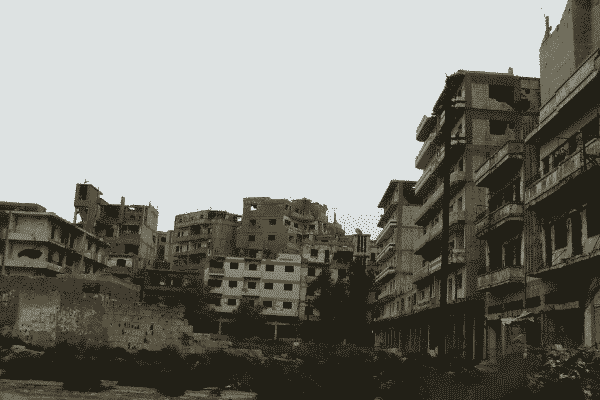
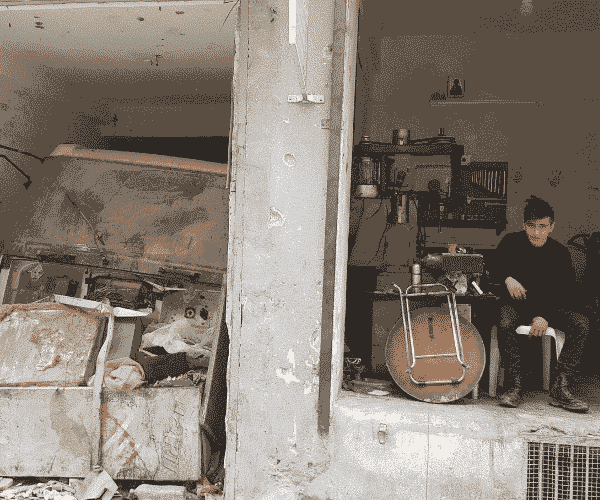
2021: al-Assad reconfirmed in the elections
It is a year that presents less fighting and less violence than the previous ones.
From a military perspective, there have been no significant operations and areas under government control have remained unchanged as opposed to those challenging President Bashar al-Assad.
However, the economic and humanitarian crisis in the country remains very serious. In this year, the number of people living below the poverty line has increased. In April, President Bashar al-Assad, in power for twenty-one years, ran again for the leadership of the country.
The elections of 26 May confirm this once again. In September, the Syrian pound lost 30% of its value compared to 2020. The almost total dependence on external products has led to an increase in inflation.
The salary is not enough to buy basic necessities. The aforementioned Islamist armed group Hayat Tahrir al-Sham (HTS), which was formerly affiliated with al-Qaeda and operates in the northern part of the country, is of great concern.
In August, the various Islamist groups in the region welcomed the Taliban's victory in Afghanistan as an example to follow.
Aid in Syria by pro Terra Sancta
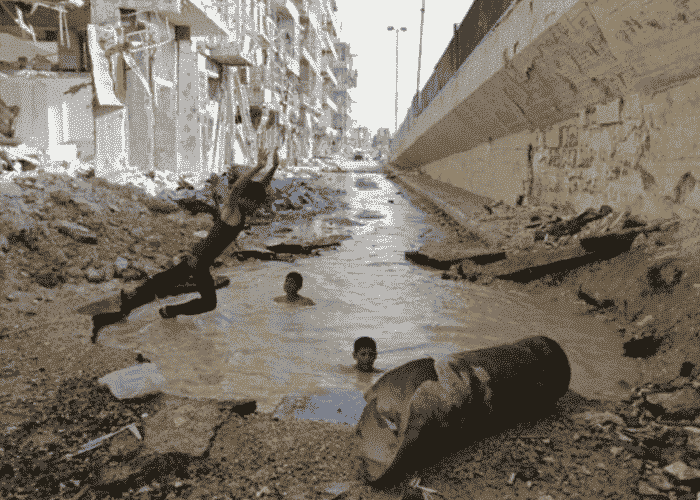
Since 2012, the association pro Terra Sancta has been at the side of the civilian population, responding to the infinite sea of needs by sending funds for multiple works.
In recent years, emergency projects in Syria have included the regular distribution of food parcels, medicines and medical expenses, vouchers to buy diesel for electricity and heating, clothes, detergents and hygiene products, diapers and powdered milk for babies.
Following the humanitarian appeal launched by the Association in 2012, the donations allowed the friars present in Syria to:
- Create 4 reception centers to host 1000 people daily and provide for the basic needs of 4000 people (active from 2021 to date)
- Helping 200 families find new homes, in place of those destroyed by war
In Syria we are present in Damascus, Aleppo, Latakia and in the villages of Knayeh and Yacoubieh to the north (article Father Hannah). Since 2012, these two northern cities have been occupied by the Islamist forces of Jabhat al-Nusra, which make intervention difficult.
Given the seriousness of the war, the numerous projects of the Association pro Terra Sancta focused on the immediate response to the humanitarian emergency. Efforts have focused on the construction of new hospitals, reception centers, new homes, the distribution of food, medicine, clothing and basic necessities.
To cope with the drama of the lack of water, in 2015, pro Terra Sancta built several wells, which immediately helped about 70,000 people.
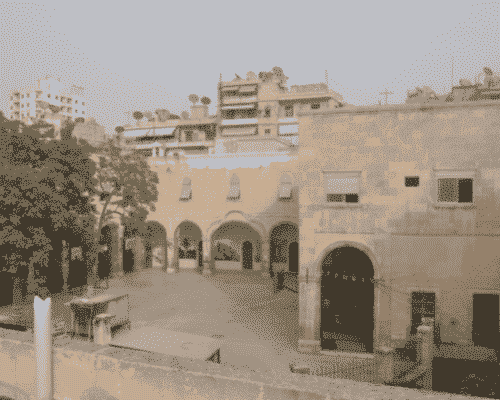
Projects
After that, the association started educational, social and cultural projects in Syria during this terrible humanitarian catastrophe. Here are some examples: in 2016 we supported the Rosary School in Aleppo and the school for the deaf and dumb near Er Ram by covering the annual current expenses of 50% of teachers' monthly salaries. In 2020, at the school for the deaf and dumb, pro Terra Sancta financed the renovation of classrooms and bathrooms. It benefits 150 children and their families, 24 teachers and 20 school employees.
Rosary School is one of the most important in west-central Aleppo. Here, we covered current expenses and supported the purchase of computers, desks and school supplies for 300 children.
In Latakia we have supported the children through the coverage of the costs for school materials and part of the school fees and in Damascus we help the kindergarten and university students.
At the Terre Sainte College, the Franciscan Care Center is active, where recreational sports and psychological rehabilitation activities for children and families are promoted.
We promote recovery and rehabilitation activities through art, sports and cooking workshops aimed at children from families of internally displaced persons.
Beneficiaries and areas of intervention, 2017
In Syria, we are close to the population exhausted by the war through help and support for the poorest, health interventions and distribution of medicines, study aid, education for children and young people, renovation of damaged buildings such as homes, convents and churches.
Aleppo
- Emergency: 11,330 families
- Education and Care: 25,000 students – 51 disabled children
- Conservation and Development: 500 families
Knayeh and Yacoubieh (since 2012 they have been occupied by Islamist forces that make intervention more difficult).
- Emergency: 240 families
- Education and Care: 42 children and their families - 11 local teachers
Latakia
- Emergency: 300 families
- Education and Care: 150 students and their families
Damascus
- Emergency beneficiaries: 500 families – 200 newborns – 200 young people of the oratory
- Education and Assistance: 150 children – 70 university students – 42 sick – 30 people helped thanks to the distribution of medicines.
- Conservation and Development
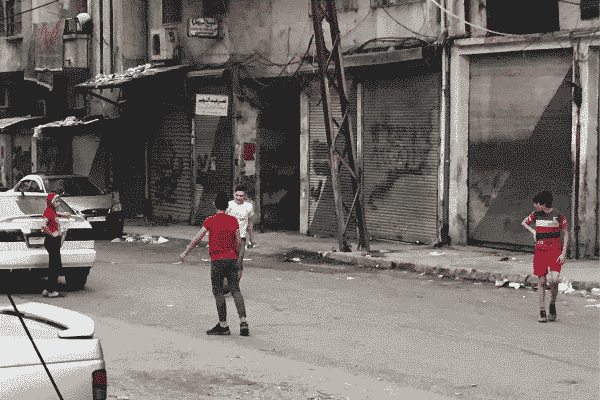
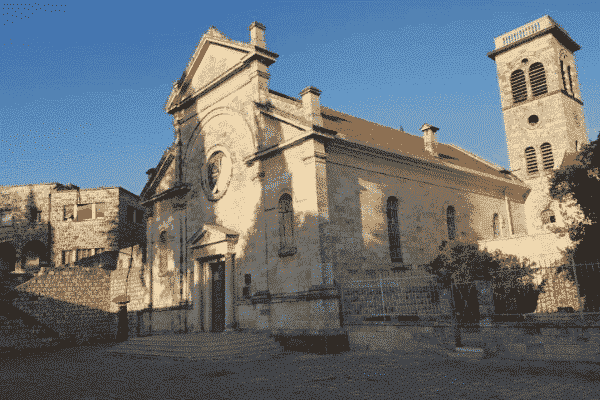
Beneficiaries and areas of intervention, 2018
Coordination of emergency projects, assistance, education and development in support of the population exhausted by war with particular attention to the weakest groups.
The main activities are: distribution of basic necessities, medical and health aid, restructuring, study aid, support and psychological rehabilitation.
Aleppo
- Emergency: 10,900 families
- Education and Assistance: 25,000 people/children used the spaces. 380 children assisted, 500 orphans and children from East Aleppo, 350 women assisted, 70 children with disabilities.
- Beneficiaries Conservation and development: 560 households – 200 shops / small businesses
Damascus
- Emergency: 550 families – 200 newborns
- Education and Assistance: 90 patients housed at the Tabbaleh center – 130 people helped thanks to the distribution of medicines – 140 children – 12,000 patients – 144 nurses and 130 doctors at the Saint Louis Hospital – 2,000 patients at the doctor's office.
- Conservation and Development: 300 families
Knayeh and Yacoubieh (Idlib provinces, areas controlled by Islamist rebels)
- Emergency: 260 families – 70 children – 65 students
Latakia
- Emergency: 320 families – 90 people helped thanks to the distribution of medicines – 150 students
- Education and Assistance: 120 internally displaced children / young people
Beneficiaries and areas of intervention, 2019
Aleppo
- Emergency projects: 9,200 families – 8,500 people helped with medicines and assistance – 500 families with infant / small children – 100 disabled Muslim children – 100 students helped financially – 37 students directly supported with after-school activities
- Education and Assistance: 25,000 people/children freely used the spaces and the swimming pool during 2019.
- Conservation Projects: 300 families supported for home repairs.
Hassakè and Raqqa
- Education and assistance projects: 120 students from Al-Muwahade School in Hassakè – 63 students from Hassakè University – 22 students from al-Qumishli University
Damascus
- Emergency projects: 550 families – 300 people helped with medical / health care and medicines – 200 students – 130 families with children / babies helped for milk and diaper expenses
- Education and Assistance: 970 children – 200 families - 140 sick people hosted at the center annually - 120 people helped with the distribution of medicines and coverage of costs of operations and hospitalizations - 90 children - 8 local music teachers - 13 teachers 2 local employees of the school
- Hospitals: 14,000 patients - 148 nurses - 132 doctors
Knaye and Latakia
- Emergency: 700 families – 150 children – 265 students – 130 people per month helped with medicines and health care – 70 children and their families – 39 local teachers
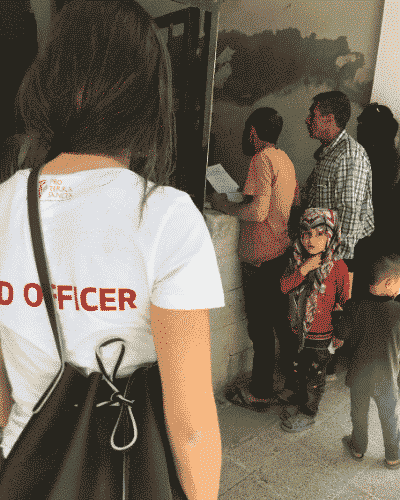
A name and a future
This is the name of a project that stems from the dramatic phenomenon of "children without identity", one of the legacies of the Syrian conflict.
" A name and a future " is conceived by the Franciscan friars of Syria and was born in a spirit of friendship between the Islamic and Christian worlds.
Unfortunately, there are many children with mothers forced to marry the jihadists who raped them and who are not registered at the registry office. Without a name, there is no identity, nor even hope.
In East Aleppo there are help desks for the assistance of orphaned children not registered at the registry office, within the project "A name and a future".
Some of the activities proposed by the Franciscan Care Center are: after-school activities, a pediatric service, in-depth courses in Arabic and English and training courses for women. It benefited 1,200 children, 600 women and 70 people involved in the activities in general.
We start from the house
In 2020 in Aleppo, pro Terra Sancta stepped up aid to support home repairs to shops and small businesses. The aim is to be able to contribute to an economic and employment recovery of citizens.
250 families benefited and 180 shops and small businesses received financial support.
In Damascus, we have started to support actions for the recovery of ancient buildings that are located in important areas of Damascus and are connected to the presence of the Franciscans of the Custody of the Holy Land. During the year, we recovered an old private house, belonging to the Franciscans. The premises have all been renovated to create new spaces for local staff to work, distribution for needy families and beneficiaries, we have organized rooms for training and young adults and larger spaces for cultural events. The goal was to create spaces for aggregation and training, while returning the ancient beauty of these buildings to the city.
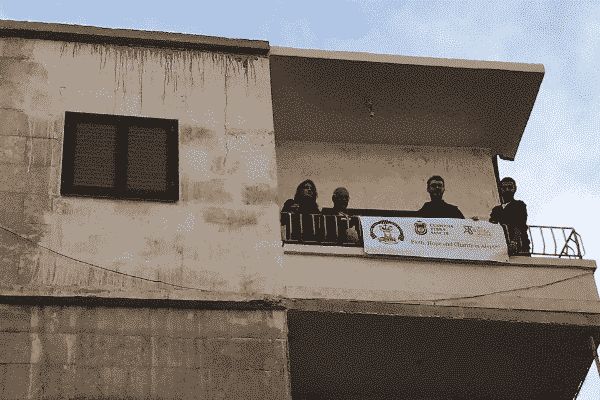
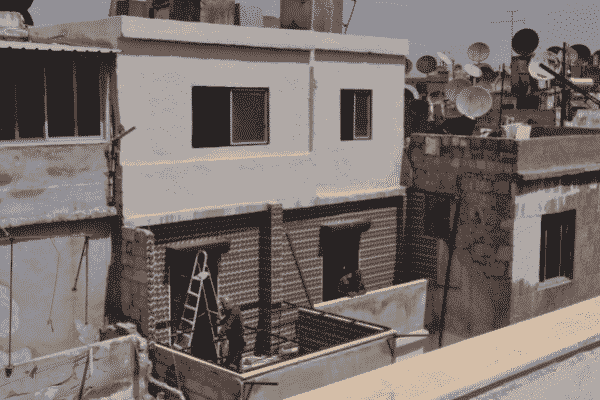
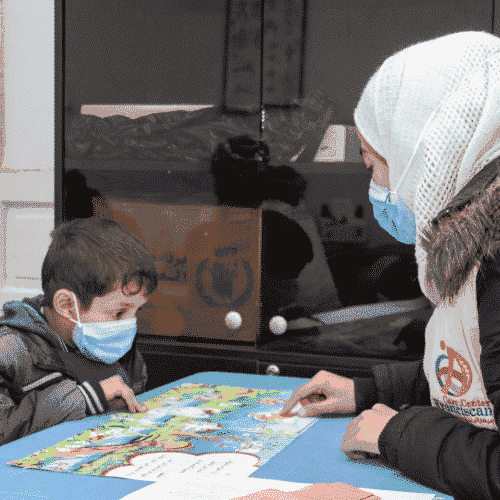
The Franciscan Care Center (FCC)
In operation since 2018, the center offers psychological rehabilitation through multiple activities. The latter include: art therapy, music therapy, individual psychological assistance, sports, English language teaching and French. 1,500 children have benefited.
In the area of East Aleppo, orphaned children who are not registered at the registry office are assisted.
In the city of Tabbaleh, there is the Franciscan Music Center, a music school that we have supported by covering current expenses, buying musical instruments and covering part of the salaries for teachers allowing free attendance of music classes. It benefits 90 children and 8 teachers.
Other programs in Syria include:
- the Parish Centre in Azizieh
- the Service Center in Bab Touma
- Memorial Kindergarten in Tabbaleh
- St. George's Kindergarten in Maaloula
- Elementary and Middle School in Knaye and Yacoubieh (Idlib)
- Darkoush Kindergarten, Idlib (the only one in the area)
- the School Assistance Centre in Latakia
- Latakia Summer Camp for Children
"A future without conflict is built in the pews, in museums, in craft workshops, in parishes. The real weapons with which to fight war are knowledge, dialogue, communion, forgiveness, charity and justice". These are the words of the collaborator Amy Rodighiero, who every day follows the advice of our President, the Custos of the Holy Land Father Francesco Patton, to build daily "small concrete gestures of charity".
Association pro Terra Sancta thanks all supporters and invites them to continue to support the Syrian people, "because everywhere there is a small sign that invites us to hope".
Support our emergency projects in Syria


















